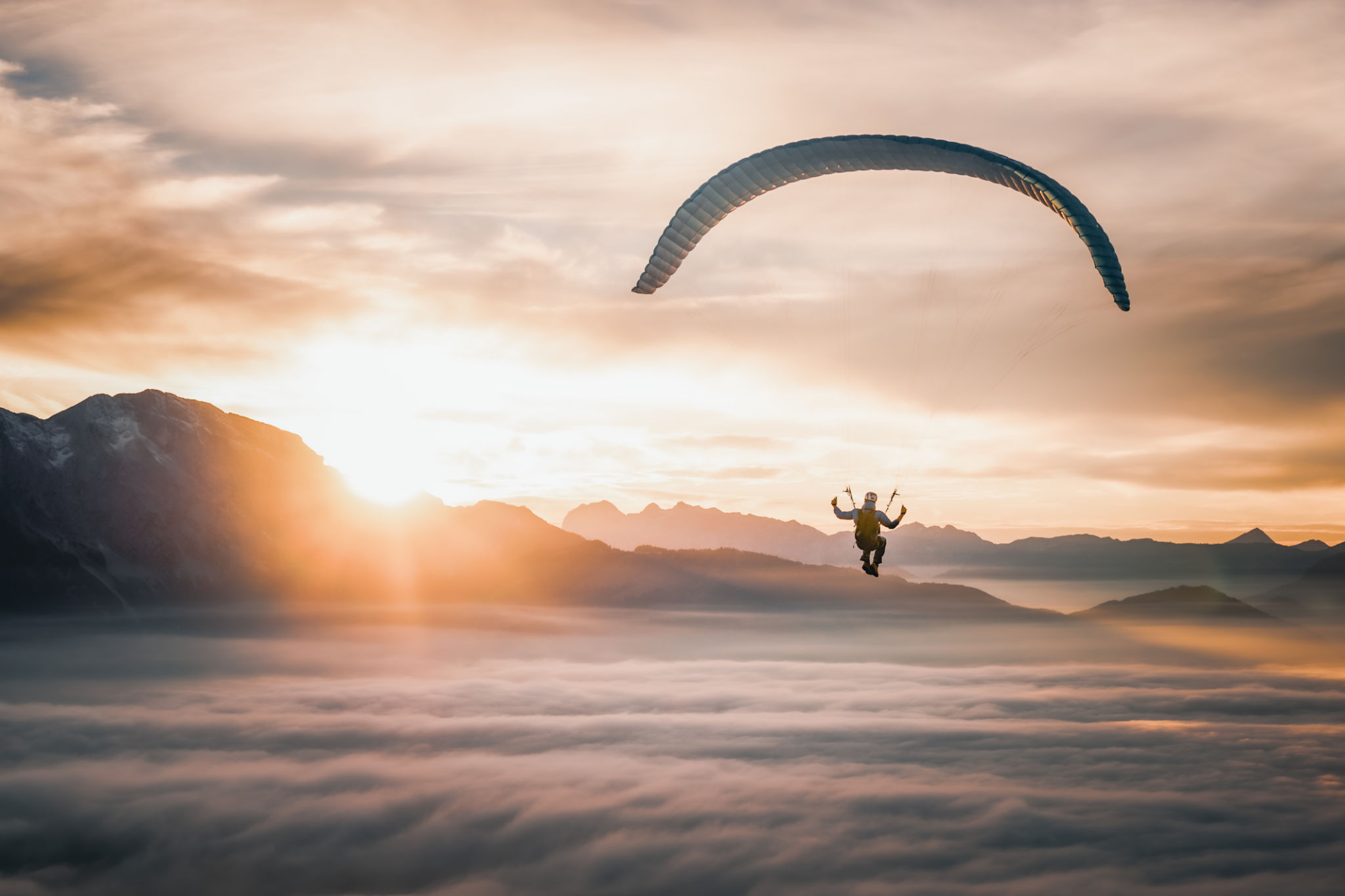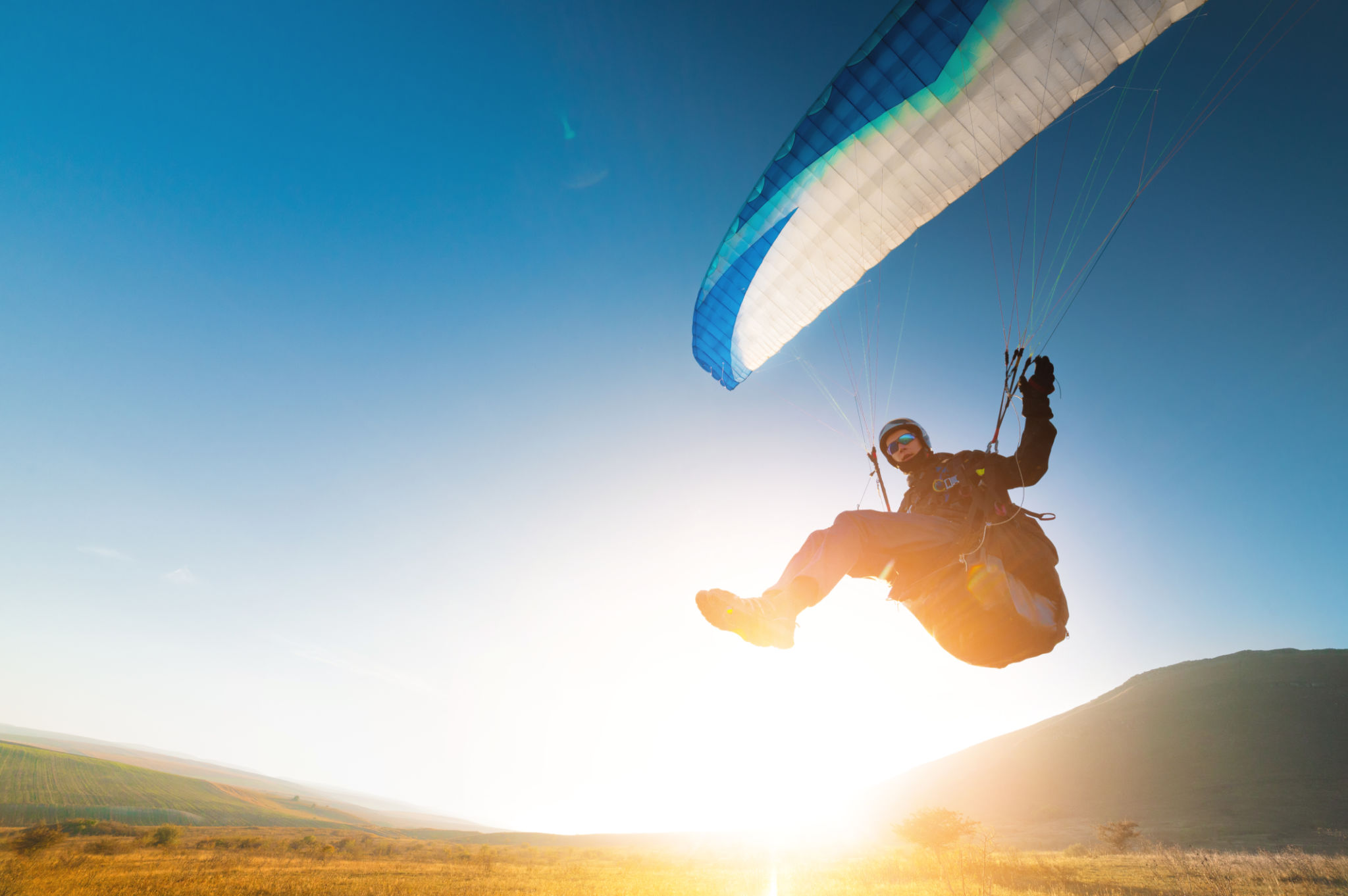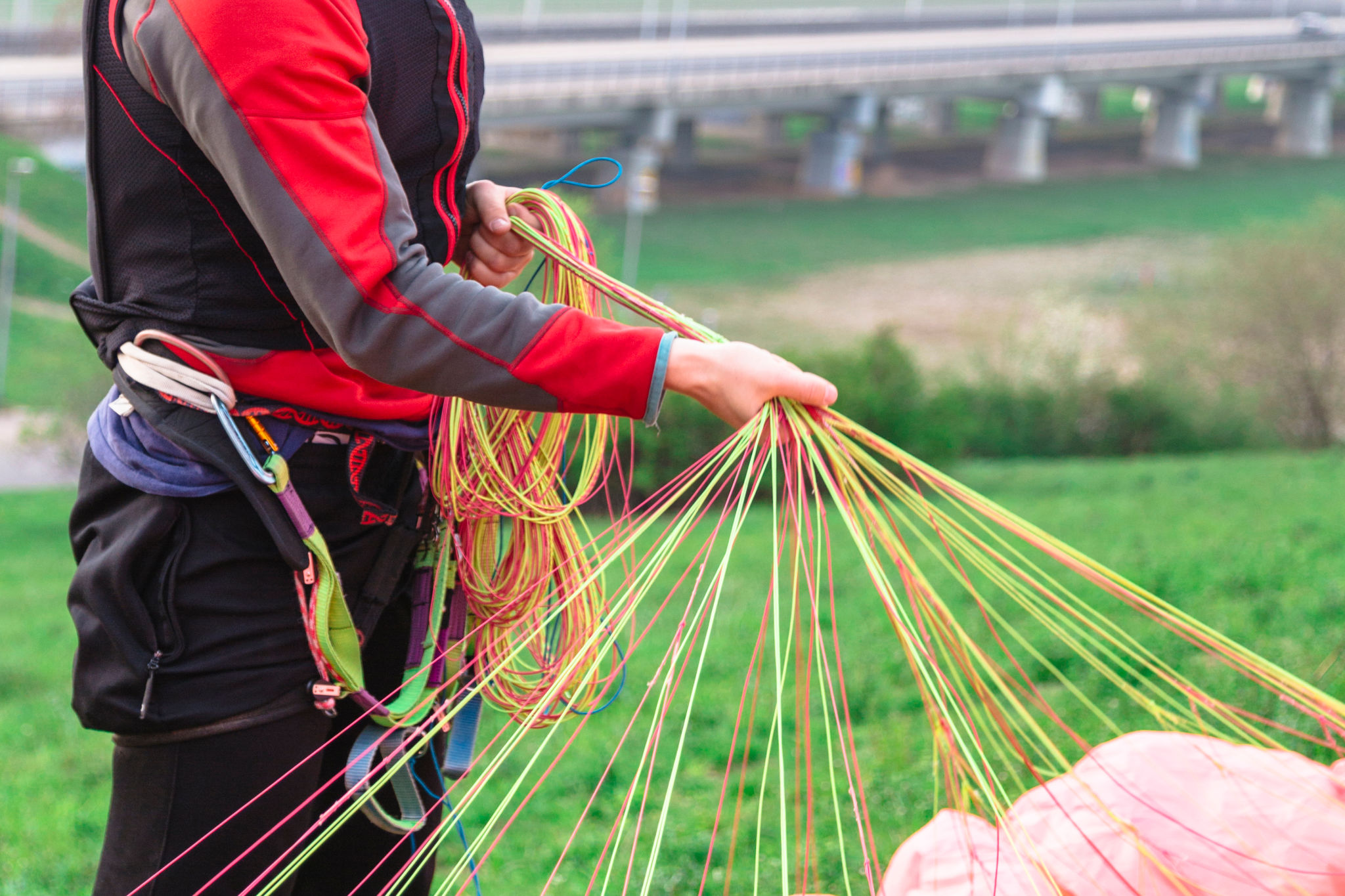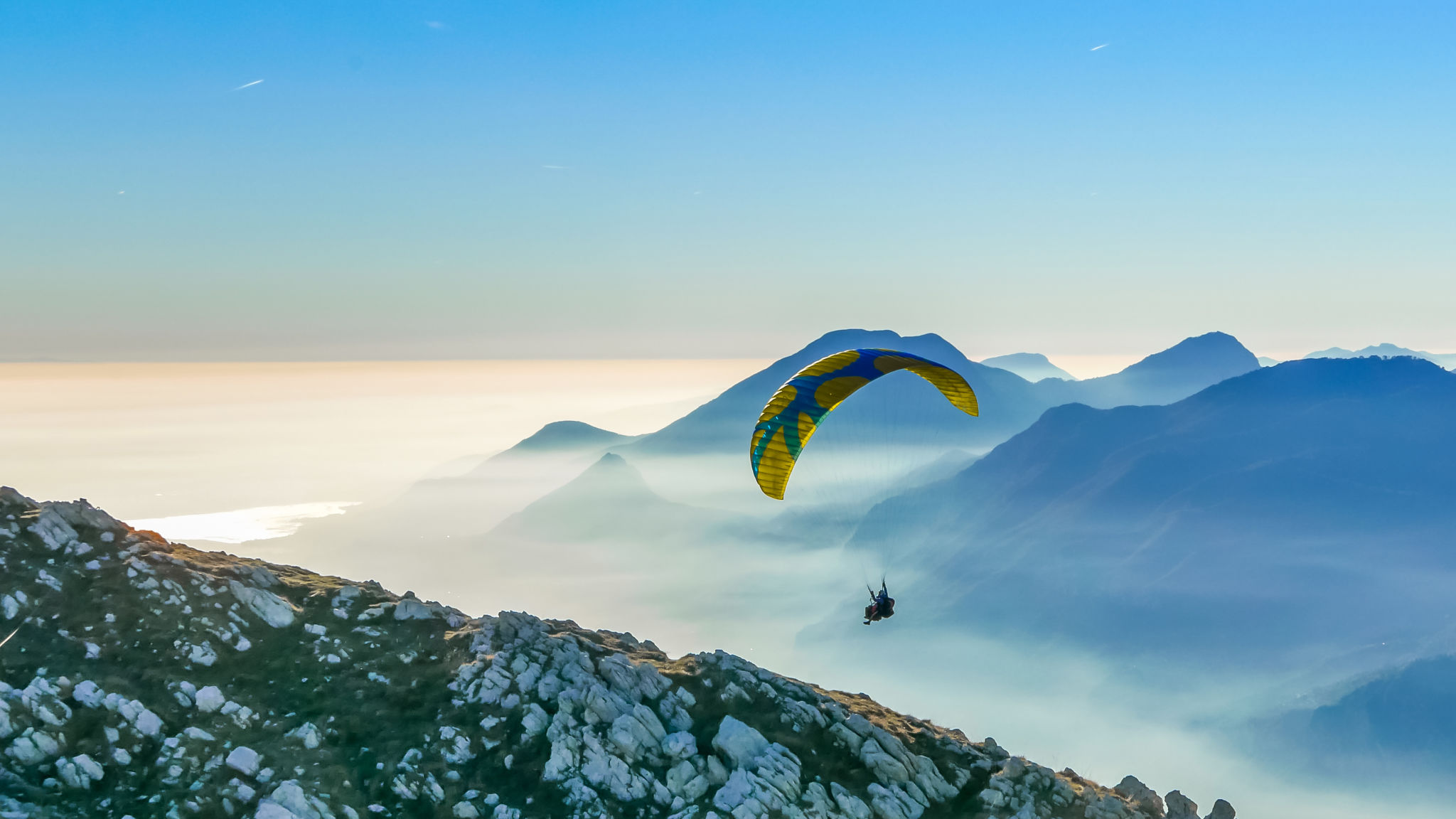Preparing for Your First Paragliding Experience: What You Need to Know
Understanding the Basics of Paragliding
Paragliding is an exhilarating sport that allows you to soar through the air and experience the world from a bird's-eye view. If you're considering your first paragliding adventure, it's important to have a basic understanding of what the experience entails. Paragliding involves flying a lightweight, free-flying, foot-launched glider aircraft with no rigid primary structure. The pilot sits in a harness suspended below a fabric wing.
The wing shape is formed by the suspension lines, the pressure of air entering vents in the front of the wing, and the aerodynamic forces of the air flowing over the outside. Although paragliding can seem daunting at first, it's remarkably safe when proper precautions are taken, and it offers an unforgettable experience for adventure enthusiasts.

Preparing Physically and Mentally
Before heading out for your first paragliding experience, it's essential to be prepared both physically and mentally. Paragliding doesn't require extreme physical fitness, but having good stamina and strength can enhance your experience. Regular exercises like walking, jogging, and swimming can help build endurance.
Mental preparation is just as important. While you may feel a mix of excitement and anxiety, it's crucial to stay calm and focused. Understanding that safety measures are in place and that you're guided by experienced instructors can help ease any nervousness.
What to Wear
Your clothing should ensure comfort and safety during your flight. Dress in layers, as temperatures can vary at different altitudes. Wear sturdy shoes with good ankle support. Avoid loose clothing that could get tangled in the equipment. A windproof jacket and gloves are advisable to protect against the wind chill.

Choosing the Right Location
The location you choose for your first paragliding experience can significantly impact your adventure. Look for sites with certified schools or clubs that offer tandem flights for beginners. Popular locations often have experienced instructors who prioritize safety and provide thorough pre-flight briefings.
Research various locations and consider factors such as weather conditions, scenery, and accessibility. Coastal areas, mountainous regions, and vast open landscapes are popular choices due to their breathtaking views and favorable wind conditions.
Understanding Safety Measures
Safety is a top priority in paragliding. Before your flight, you'll receive a detailed briefing on the equipment, take-off procedures, flight dynamics, and landing techniques. Pay close attention to these instructions and don't hesitate to ask questions if anything is unclear.
During your flight, you'll be connected to an experienced pilot who will handle navigation and control of the paraglider. Your role is to follow their instructions closely, ensuring a smooth and enjoyable flight experience.

Embracing the Experience
Once you're airborne, take a moment to embrace the breathtaking views and the sensation of flying. The feeling of freedom is unparalleled, and many find it to be a life-changing experience. Remember to relax and enjoy the ride while taking in the scenery below.
For those who fall in love with paragliding, there are opportunities to pursue it further through lessons and obtaining a solo flying license. Whether you choose to continue or not, your first paragliding experience is sure to be a memorable adventure.
Post-Flight Reflections
After landing safely back on solid ground, take some time to reflect on your experience. Share your thoughts with fellow participants or write down your feelings in a journal. This can help cement the memories of your adventure and provide insights into how you handled the experience emotionally and physically.
Paragliding is more than just a sport; it's an opportunity to push your boundaries and see the world from a new perspective. With proper preparation and an open mind, your first paragliding adventure promises to be an unforgettable journey.

